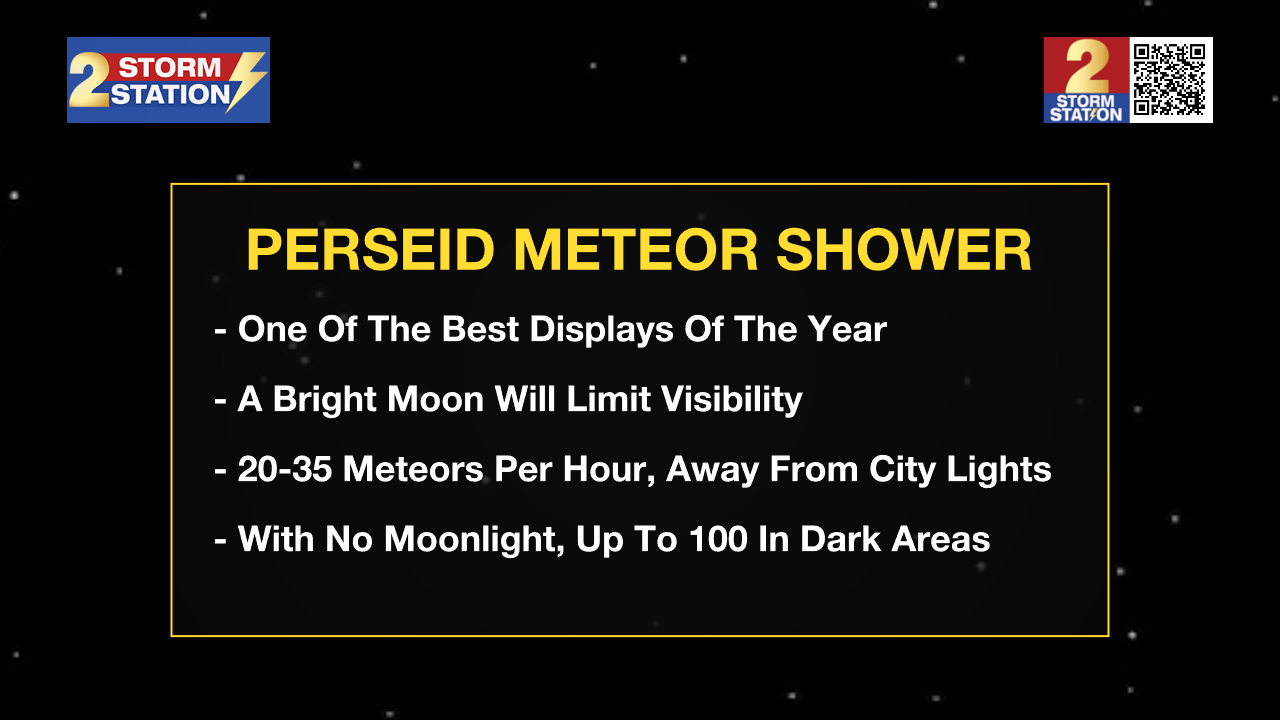Keep watch for shooting stars, one of the best meteor showers is about to peak
Known as one of the best shooting star displays of the year, the Perseid meteor shower will peak Tuesday night (Aug. 12-13). Under optimal viewing conditions, an observer could see up to 100 meteors per hour. That said, moonlight will spoil the fun this time.
Since the Moon will be shining at around 80% of its full brightness and remain above the horizon for most of the night, moonlight will effectively wash out a sizable number of meteor streaks. Accounting for the added moonlight, a best-case scenario would be 20-35 visible meteors per hour in dark, rural areas. Fortunately, moonlight will be less of an issue for the Perseids in 2026.
City lights also reduce meteor visibility. A typical suburban area should expect fewer meteors per hour, perhaps on the order of 5-15. In urban hot spots with tons of light pollution like Baton Rouge or New Orleans, that number could drop even more.
Nevertheless, a fair number of Perseid meteors can overcome the challenges presented by the Moon this year. For a better viewing opportunity:
• Find a rural area, away from city lights.
• View several hours after sunset. The best window is between midnight and dawn.
• Look everywhere for meteors, except near the Moon.
Trending News
• Be patient! It may take a few minutes, or longer, to see a meteor.

Meteor showers happen when Earth passes through a trail of dust and debris left behind by a comet or asteroid. Specifically in late summer, Earth passes through the Perseid cloud, a stream of debris left behind by the comet Swift-Tuttle. Such debris slices through Earth’s atmosphere at 37 miles per second, burning up as it does so. This produces a streak of light seen on the ground as a meteor.
The Perseid meteor shower is an annual occurrence, lasting from mid-July to late-August. The peak typically occurs in the second week of August — that's where the dazzling display occurs. Outside of the peak window, visible meteors are few and far between. The shower gets its name because it appears in the general direction of the constellation Perseus.
The Storm Station is here for you, on every platform. Your weather updates can be found on News 2, wbrz.com, and the WBRZ WX App on your Apple or Android device. Follow WBRZ Weather on Facebook and Twitter for even more weather updates while you are on the go.


